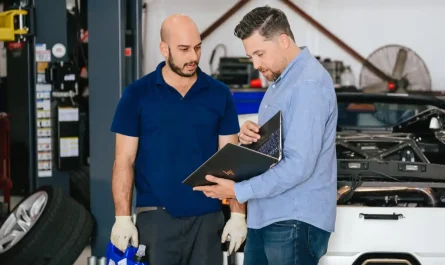When drivers say they want full coverage car insurance, they usually picture a single, all‑powerful policy that shields both them and their vehicle from every loss imaginable. In truth, no insurer sells a product called full coverage. Instead, that phrase is everyday shorthand for a bundle of individual protections—each designed to pay specific bills after a crash, a theft, or another surprise. The good news is that a modern auto policy lets you stack those protections any way you like, so you can come very close to the peace of mind most people have in mind when they say “full coverage.” By the end of this article, you will know exactly which coverages create that umbrella, how deductibles and limits work, and why your loan or lease contract might force you to carry extra safeguards even if your personal budget would not.

Core Coverages at a Glance
| Coverage Type | What It Pays For | Typical Scenario | Part of “Full Coverage”? |
|---|---|---|---|
| Auto Liability | The other driver’s medical costs and car repair when you cause an accident | You rear‑end a sedan at a stoplight | Yes, required by state law in most places |
| Medical Payments / Personal Injury Protection (PIP) | Your doctor or hospital bills (and often your passengers’) regardless of fault | Paramedics take you from the scene after a collision | Yes, strongly recommended |
| Collision | Repairs or replacement of your car after it hits another vehicle or object | You slide into a guardrail, denting the bonnet | Yes, often required by lenders |
| Comprehensive | Repairs or replacement of your car after non‑collision damage such as theft, storm debris, fire, or vandalism | A tree branch crashes through the windshield overnight | Yes, often required by lenders |
| Transportation Expense | Rideshare, taxi, bus, or rental‑car costs while your vehicle sits in the shop for a covered claim | Your SUV spends eight days in the body shop | Often rolled into “full coverage” |
| Uninsured / Underinsured Motorist | Your injuries and car repairs when an at‑fault driver carries little or no insurance | A hit‑and‑run driver sideswipes you on the highway | Yes, essential in many states |
Auto Liability Coverage: Your Legal Foundation
Every state that mandates car insurance starts with liability coverage because it protects other people from your mistakes. If you cause a collision, liability pays the injured party’s medical care, lost wages, and vehicle repairs up to the dollar limit you purchase. Choose a limit high enough to keep lawsuits at bay—serious crashes can trigger six‑figure claims—and remember that liability never pays your own hospital invoice, your lost income, or your crushed fender. That gap is precisely why all the extra coverages below exist.
Medical Payments and Personal Injury Protection: Caring for You and Your Passengers
If you and the family land in the emergency room after a wreck, medical payments coverage—or its broader cousin, personal injury protection—steps in to settle the doctor’s tab regardless of who caused the crash. In many states PIP also covers rehabilitation, lost income, and even household help while you heal. Because health‑insurance deductibles have soared, this slice of auto insurance frequently fills a painful gap, and most drivers who chase full coverage insist on it for that reason alone.
Collision Coverage: Fixing or Replacing Your Car After a Wreck
Imagine backing into a concrete pillar or swapping paint with a pickup in rush‑hour traffic. Those dents belong squarely in collision territory. After you pay your chosen deductible—$500 and $1,000 are common—collision coverage funds the rest of the repair bill or reimburses you for the actual cash value of a total loss. Lenders love collision because it keeps their financial collateral rolling, so if you still make car payments, expect this coverage to be non‑negotiable in your loan or lease agreement.
Transportation Expense Coverage: Keeping You Moving While Repairs Happen
Life does not stop just because your bumper crumpled, and transportation expense coverage acknowledges that reality. The feature reimburses reasonable rideshare fares, taxi charges, or daily rental‑car fees while the body shop patches your vehicle after a covered claim. It is inexpensive, and drivers who commute forty miles each way will tell you it turns an inconvenient fender bender into a merely annoying one.
Comprehensive Coverage: Protection Beyond Collisions
A smash‑and‑grab thief, a neighborhood hailstorm, a runaway shopping cart, or an overnight engine‑bay fire—comprehensive coverage catches nearly every mishap that does not involve another moving vehicle. You pick a deductible, and the insurer shoulders the remaining cost of repair or, if the damage totals your ride, a payout matching the car’s current market value. Because Mother Nature and petty criminals do not ask permission, comprehensive coverage completes the full‑coverage picture for anyone who cannot instantly buy another vehicle out of pocket.
Uninsured and Underinsured Motorist Coverage: Shielding You From Irresponsible Drivers
Roughly one in eight drivers on American roads carries no insurance at all, and countless more carry only the minimum legal limits. If one of them slams into you, uninsured and underinsured motorist coverage swoops in to cover bodily injuries and, depending on your state, property damage that the at‑fault driver should have paid. Many consumers accidentally skip this line item because they confuse it with liability; do not be that driver, especially if you live in a high‑traffic metro area.
Do You Need Collision and Comprehensive When the Car Is Paid Off?
Finance companies require both protections until the final installment clears because they want their collateral preserved. Once the title sits in your drawer, you can drop either coverage, but only if you can live with a large out‑of‑pocket replacement cost after a total loss. Drivers who park outside, commute on crowded highways, or own a vehicle worth more than a few thousand dollars rarely find the gamble worthwhile.
Limits, Deductibles, and How They Shape Real‑World Payouts
Every coverage carries a dollar ceiling known as the limit; every collision or comprehensive claim also carries a dollar hurdle called the deductible. Higher limits raise your premium modestly but protect your bank account when a catastrophic crash or lawsuit strikes, while higher deductibles lower your premium yet force you to shell out more before the insurer pays. Balance those two levers by asking yourself how much emergency cash you can truly spare tomorrow afternoon if fate flips your car.
Choosing the Right “Full Coverage” Mix for Your Budget
Start by calculating your vehicle’s current market value, your emergency‑fund balance, and the amount of time you can function without a car. Then combine state‑mandated liability limits that genuinely guard your assets, medical payments or PIP that matches your health insurance gap, and property coverages—collision, comprehensive, transportation expense—that reflect how hard it would be to repair or replace your ride. Finally, add uninsured motorist protection because other drivers’ poor choices should never wreck your financial plan.
Coverage Combinations for Common Driver Profiles
| Driver Profile | Smart Baseline Coverages | Why This Mix Works |
|---|---|---|
| New car with loan or lease | Liability 100/300/100; PIP or MedPay; Collision; Comprehensive; Transportation Expense; Uninsured Motorist | Lender demands property coverages, high liability guards future income, extras keep you mobile |
| Five‑year‑old paid‑off sedan | Liability 100/300/100; PIP or MedPay; Collision with $1,000 deductible; Comprehensive with $500 deductible; Uninsured Motorist | Still valuable enough to repair, but higher deductibles trim premium |
| Ten‑year‑old city commuter car | Liability 100/300/100; PIP or MedPay; Uninsured Motorist | Book value low, so dropping collision and comprehensive saves money without risking a large loss |
Key Takeaways on Building True Full Coverage Car Insurance
Full coverage car insurance is not a single product you can click and buy; it is a customized package that blends liability, medical, collision, comprehensive, transportation expense, and uninsured motorist protections into a safety net wide enough to catch both your wallet and your wheels. Understand what each slice covers, set limits that match today’s medical and repair costs, choose deductibles your savings account can handle overnight, and keep lender requirements in mind until the loan balance hits zero. By weaving those elements together, you will create the practical, easy‑to‑understand security blanket that most people visualize when they ask for “full coverage”—and you will steer clear of the costly surprises that drivers without a complete policy face every single day.


